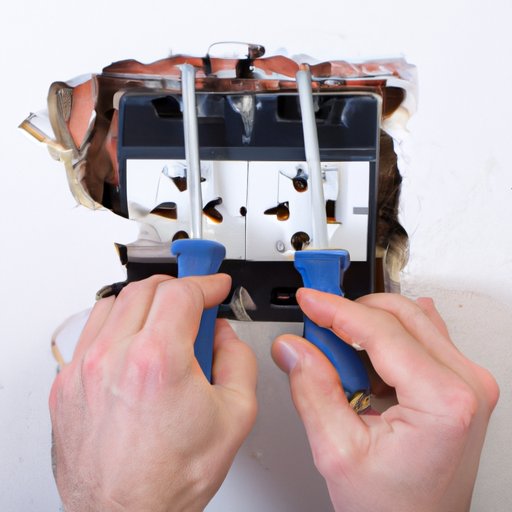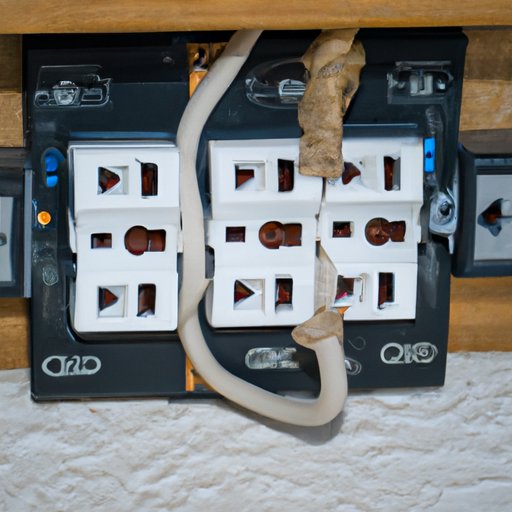Introduction
A circuit breaker is a device that interrupts an electrical circuit when it experiences an overload or short circuit. This helps prevent damage to any of the wiring or devices connected to the circuit. However, if the circuit breaker trips too often, it can be an indication of a larger problem in your home’s electrical system. It’s important to take steps to prevent circuit breakers from tripping by understanding the underlying causes and taking action to address them.

Keep the Circuit Load Balanced
One of the most common reasons for circuit breakers tripping is an overloaded circuit. To prevent this from happening, assess all the appliances and electronics connected to the circuit, and spread out the load across multiple circuits. That way, no one circuit will become overloaded.
You can also use power strips to help manage the load on a given circuit. Just make sure you don’t plug too many items into a single power strip as this can still overload the circuit.
Use a Surge Protector
Power surges can also cause circuit breakers to trip. To protect against these surges, install a surge protector. A surge protector is a device that absorbs the excess energy created by a power surge, keeping it away from your home’s wiring. This helps protect your electronics and prevents circuit breakers from tripping.
When selecting a surge protector, look for one that has a Joule rating of at least 1,000. This will provide adequate protection against power surges.
Upgrade Your Wiring
Another potential cause of circuit breakers tripping is inadequate wiring. To prevent this from happening, check the gauge of the wire. The gauge should match the amount of current the circuit is designed to handle. If it doesn’t, you may need to upgrade the wiring to prevent a circuit overload.
If you do need to upgrade the wiring, make sure you install the appropriate wire for the job. For example, if you’re running a 20-amp circuit, you should use 12-gauge wire. If you’re running a 30-amp circuit, you should use 10-gauge wire.

Clean the Breakers and Outlets
Over time, dust and dirt can build up on circuit breakers and outlets, causing them to trip. To prevent this, unplug everything connected to the circuit and clean the connections with a damp cloth. This will help ensure a good connection and reduce the risk of circuit breakers tripping.
Install GFCI Outlets
Ground fault circuit interrupters (GFCIs) are special outlets designed to shut off the power if they detect a ground fault. This helps protect against electric shocks and can also prevent circuit breakers from tripping. Look for areas in your home where water is present, such as near sinks and showers, and install GFCI outlets in those locations.
Increase the Circuit Breaker Amperage
If you’re still having trouble with circuit breakers tripping, you may need to increase the amperage of the circuit breaker. To do this, calculate the total amperage needed for all the items connected to the circuit. If this number exceeds the amperage of the circuit breaker, you should upgrade to a higher amperage.
Schedule Professional Maintenance
If none of the above tips have worked and your circuit breakers are still tripping, it’s best to call a qualified electrician. They can inspect your home’s electrical system and identify any potential issues that could be causing the problem. They can also make any necessary repairs or upgrades to help prevent circuit breakers from tripping.
Conclusion
Circuit breakers tripping can be an indication of a larger problem in your home’s electrical system. To prevent this from happening, homeowners should assess their appliances and electronics, use power strips and surge protectors, upgrade their wiring, clean the breakers and outlets, install GFCI outlets, increase the circuit breaker amperage, and schedule professional maintenance. Taking these steps can help keep your home’s electrical system functioning properly and prevent circuit breakers from tripping.
(Note: Is this article not meeting your expectations? Do you have knowledge or insights to share? Unlock new opportunities and expand your reach by joining our authors team. Click Registration to join us and share your expertise with our readers.)
